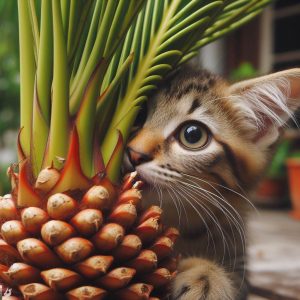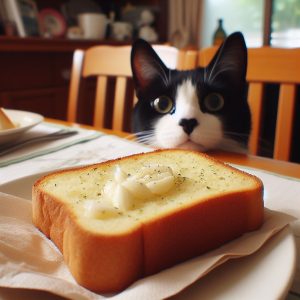As a caring cat owner, you meticulously read every ingredient on your cat’s food labels. But one item that may give you pause is “ash.” At first glance, ash seems like something you don’t want to feed your cat. This concerning component warrants a deeper explanation. What exactly is ash, and why is it added to cat food? Read on for a comprehensive overview of the ash in cat food, including what it is, why it’s added, its nutritional purpose, and how to evaluate ash content when choosing your cat’s diet.
Demystifying Ash – A Laboratory Analysis of Minerals
Let’s start by answering the fundamental question – what is ash in pet food?
Ash refers to the total mineral content remaining after a sample of cat food has been completely incinerated or combusted in a laboratory setting. To analyze the ash content, a precisely measured sample of the cat food is placed in a special furnace called a muffle furnace, set to temperatures over 500°C. The extreme heat burns away all organic compounds, leaving only the inorganic mineral residue. This remaining mineral residue is referred to as “ash.”
Ash analysis provides a fast and convenient way for pet food manufacturers to determine the total mineral or inorganic matter in a food. The ash includes all essential dietary macro minerals and trace minerals naturally present in the ingredients before processing.
Macrominerals Found in Ash
The macrominerals found in cat food ash include:
- Calcium – Critical for bone structure, nerve transmission, muscle function, blood clotting, hormone secretion and heart regulation.
- Phosphorus – Found in bones, teeth, cells and tissues throughout the body. Works closely with calcium for bone formation.
- Potassium – Important for fluid balance, nerve transmission, and muscle contraction. Most abundant mineral in the body.
- Sodium – Along with potassium, regulates body fluids and transmits nerve signals.
- Chloride – Helps maintain proper fluid balance and stomach acid. Found in stomach and blood.
- Magnesium – Facilitates hundreds of metabolic reactions. Supports bone, muscle, nerves, immune system and energy production.
- Sulfur – Found in amino acids that make up proteins. Needed for enzyme production, collagen synthesis, and detoxification.
Trace Minerals Found in Ash
The trace minerals included in ash are:
- Iron – Essential for oxygen transport in blood and energy metabolism.
- Zinc – Supports immune system, wound healing, normal growth, reproduction, taste and smell.
- Copper – Plays a role in iron metabolism, melanin production, connective tissue formation, and brain development.
- Manganese – Involved in bone development, metabolism, and antioxidant systems.
- Iodine – Needed for proper thyroid hormone production to regulate metabolism.
- Selenium – Has antioxidant properties that help protect cells from damage.
- Molybdenum – Helps with metabolic processes including waste processing and energy production.
- Cobalt – Required for synthesis of vitamin B12.
Together this array of macro minerals and trace minerals in ash provide a snapshot of the total mineral nutrition in cat food.
Why Do Cat Foods Contain Ash and Minerals?
Now that we understand what ash represents, the next question is – why do cat foods contain ash and minerals in the first place?
There are three main reasons ash ends up in commercial cat food:
1. To Meet Nutritional Standards
Pet foods must meet nutritional standards established by the Association of American Feed Control Officials (AAFCO), including minimum levels of key minerals. Calcium, phosphorus, potassium, sodium, magnesium, iron, copper, zinc and iodine are all considered essential nutrients for cats.
Ash gives manufacturers a simple way to analyze and ensure cat foods contain adequate minerals to avoid deficiency. Dry cat food, for example, must have a minimum of 0.5% calcium, 0.4% phosphorus, and 0.1% sodium, according to AAFCO profiles.
2. Naturally Occurring in Ingredients
Many ingredients used in cat food naturally contain minerals that contribute to ash. Meat meals like poultry meal, fish meal, lamb meal, and meat meal contain bone as well as connective tissue when rendered. Bone is very high in calcium and phosphorus. Connective tissue and organ meats also provide other naturally occurring minerals.
Grains like corn, wheat, rice, and oats contain modest amounts of phosphorus, magnesium, zinc, copper and manganese in their outer bran layer. The same goes for vegetable ingredients like carrots and peas.
3. As Supplemental Minerals
To further enhance the natural mineral levels already present in ingredients, additional mineral supplements are often added to cat foods. Common supplements include:
- Calcium carbonate – Provides highly bioavailable calcium
- Dicalcium phosphate – Supplies calcium and phosphorus
- Potassium chloride – Source of potassium
- Iron sulfate or oxide – Adds iron
- Zinc oxide or sulfate – Provides zinc
- Copper sulfate – Contributes copper
- Magnesium oxide – Adds magnesium
- Manganese oxide or sulfate – Provides manganese
- Sodium selenite – selenium source
- Cobalt carbonate – Supplies cobalt
These mineral additions help create a nutritionally complete and balanced formula suited for feline health.
The Potential Benefits of Ash for Cats
Clearly minerals perform crucial roles in the body. Without adequate intake from diet or supplements, cats are at risk for deficiency. Let’s explore some of the key benefits minerals in ash provide.
Essential for Normal Metabolic Functions
Minerals like calcium, phosphorus, potassium, sodium, chloride and magnesium are electrolytes needed for basic metabolic processes. For example:
- Calcium and phosphorus form an intricate system managing bone development and remodeling. Phosphorus also assists in energy production.
- Sodium and potassium are electrolytes that help conduct nerve impulses and control muscle contraction.
- Chloride works closely with sodium and potassium to preserve normal fluid volumes and blood pressure.
- Magnesium is involved in over 300 enzymatic reactions related to protein, carb and fat metabolism.
Without these macro minerals, normal physiologic functions would cease.
Cofactors for Enzyme Activities
In addition to their individual roles, many minerals act as important cofactors that enable enzyme activities. Enzymes drive practically every biochemical reaction in the body. For instance:
- Zinc enables over 100 different enzymes involved in metabolism, DNA and protein synthesis.
- Copper helps form critical enzymes like superoxide dismutase which acts as an antioxidant.
- Iron allows enzymes to utilize oxygen, including those involved in the Krebs cycle for energy formation.
- Manganese activates enzymes needed for processing carbs, amino acids and cholesterol.
Minerals help catalyze these enzyme-controlled reactions that are fundamental to life.
Immune System Support
Certain trace minerals are crucial for normal immune function and resistance to infection. For example:
- Zinc deficiency can lead to decreased T cell lymphocytes needed to fight off viruses and bacteria.
- Iron allows white blood cells to mount an appropriate inflammatory response. Anemia can suppress immunity.
- Copper helps form antibodies as part of the humoral immune response.
- Selenium boosts proliferation of immune cells and antibody production.
Without adequate intake of these immunomodulatory minerals, cats may experience suppressed immune function and increased infections.
Bone and Tooth Strength
A steady supply of certain macrominerals is vital for building and maintaining strong bones and teeth. In particular:
- Calcium and phosphorus make up the hydroxyapatite mineral matrix that provides compressive strength to bones.
- Magnesium is also deposited into bone crystal lattice to provide structural integrity.
Appropriate dietary levels of these minerals allows growing kittens to properly mineralize new bone and helps adult cats avoid excess bone resorption.
Additional Benefits
Specific minerals offer other advantages as well:
- Zinc – supports normal taste, vision, reproduction, growth and development.
- Iodine – crucial for thyroid hormone synthesis to regulate metabolism.
- Iron – needed for oxygen carrying capacity of hemoglobin in red blood cells.
- Selenium – boosts antioxidants and protects tissues from oxidative damage.
Clearly minerals offer a diverse array of benefits spanning from immunity to vision to reproduction and beyond!
Potential Drawbacks of High Ash Cat Food
While mineral nutrition is extremely important for cats, excessive ash and mineral content in cat food can cause some potential issues to be aware of.
Throws Off Calcium:Phosphorus Ratios
Ash itself doesn’t differentiate between calcium and phosphorus content. A very high ash percentage could indicate excessive bone meal or calcium carbonate skewing the balance of calcium and phosphorus.
Ideally, cat foods should have calcium and phosphorus close to a 1.1:1 ratio. Too much calcium can inhibit absorption and use of phosphorus, and vice versa. Excessively high ash percentages may disrupt this ratio.
Risk of Struvite Crystal Formation
One drawback to watch for in cats prone to urinary issues is excessive minerals that raise urine pH and contribute to struvite crystal development. Particularly high levels of phosphorus, magnesium and potassium can make urine more alkaline.
However, this mainly applies to cats predisposed to crystals and stones – not all cats. Appropriate ash levels are perfectly fine for most healthy cats.
Use of Low-Cost Fillers
In some low-priced, low-quality cat foods, ash content is increased by adding inexpensive mineral products like limestone, salt, phosphate salts or potassium chloride as fillers. They boost ash simply to meet AAFCO minimums rather than provide balanced nutrition.
Palatability and Digestibility Issues
Kibbles with over 8-10% ash tend to have a gritty, chalky texture that cats find less palatable. High ash also increases stool volume and reduces digestibility. Excessive minerals may pass right through the digestive tract unabsorbed.
Needs Balance with Amino Acids
While minerals are important, their absorption and utilization depends on complementary amino acids from protein. A diet with adequate minerals but inadequate protein won’t allow the body to properly use those minerals. Balance is key.
Tips for Evaluating Ash Content in Cat Food
Given the potential pros and cons, how should you factor ash percentages when choosing your cat’s food? Here are some tips:
For most cats, look for:
- Dry food with ash around 7-8%
- Wet food with ash around 2-3%
This level meets nutritional needs without excess.
For cats prone to crystals, select:
- Dry foods with ash closer to 6%
- Wet foods with ash under 2%
Lower ash may help reduce risk.
Also consider:
- Protein levels (30% minimum in dry food)
- Calcium:phosphorus ratios close to 1:1
- High quality protein sources
- Meat vs. plant-based ingredients
- Any health conditions
- Your individual cat’s preferences
The Bottom Line on Ash in Cat Food
To summarize, ash simply refers to the total mineral content measured after a cat food sample is burned in a laboratory furnace, leaving only the inorganic mineral residue. This ash is not technically an added ingredient, but rather represents the sum of all essential minerals naturally present in ingredients before processing.
Ash contains beneficial macro minerals like calcium, potassium, and phosphorus as well as trace minerals such as zinc, iron, iodine, and selenium. In adequate amounts, these minerals support healthy bones, teeth, enzyme function, fluid balance, immunity, and overall metabolism.
However, overly high ash from excessive bone meal or supplements may disrupt normal calcium:phosphorus ratios. High ash also tends to make kibble less palatable and digestible. For most cats, look for ash around 7-8% in dry food and 2-3% in wet food to meet nutritional needs without excess.
By understanding what ash means on your cat’s food label, you can provide the right balance of mineral nutrition tailored for your feline friend’s optimal health and wellbeing.


